Sailing Southern Patagonia
Expeditions | Sailing School
About Pic La Lune
Welcome aboard
The Pic La Lune was born in 1996 and, together with its previous captains, sailed through the Mediterranean, the Caribbean, and Southern Seas. In 2017, the Pic La Lune and Diego Quiroga met to navigate the waters of the Beagle Channel (Onashaga) and Southern Seas. Both are based in Ushuaia, Tierra del Fuego, Argentina.
Sailing in the Beagle Channel or Canal Onashaga (Yagán language) combines the harshness of weather conditions with a journey through inhospitable and little-explored landscapes.
The frigid waters of the Beagle Channel are a destination for sailors worldwide, either for their proximity to Cape Horn or as a supply port for those who venture into Antarctica.
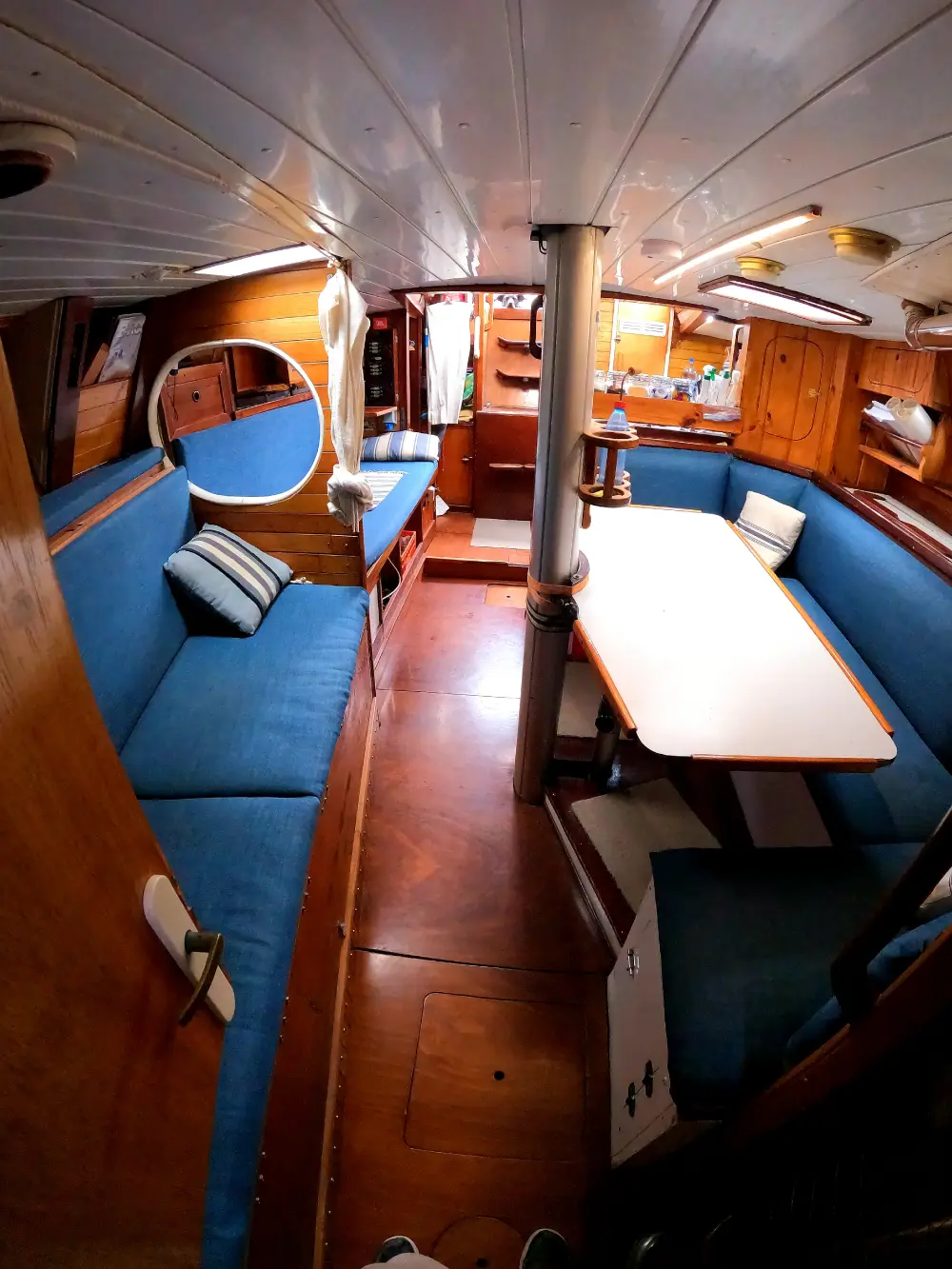
Pic La Lune Expeditions
The sailboat gives us the possibility to access inhospitable areas.
Mitre Peninsula
Mitre Peninsula is one of the most inhospitable and rugged areas of the Isla Grande de Tierra del Fuego. It is where the harshness of the South Atlantic meets the ruggedness of the Patagonian coasts.
The expeditions we undertake to the peninsula focus on exploring the bays: Slogget, Aguirre, Valentín, Buen Suceso, and Tethis. There, we can observe wildlife, flora, and a great deal of history related to the human settlements that once inhabited the island.
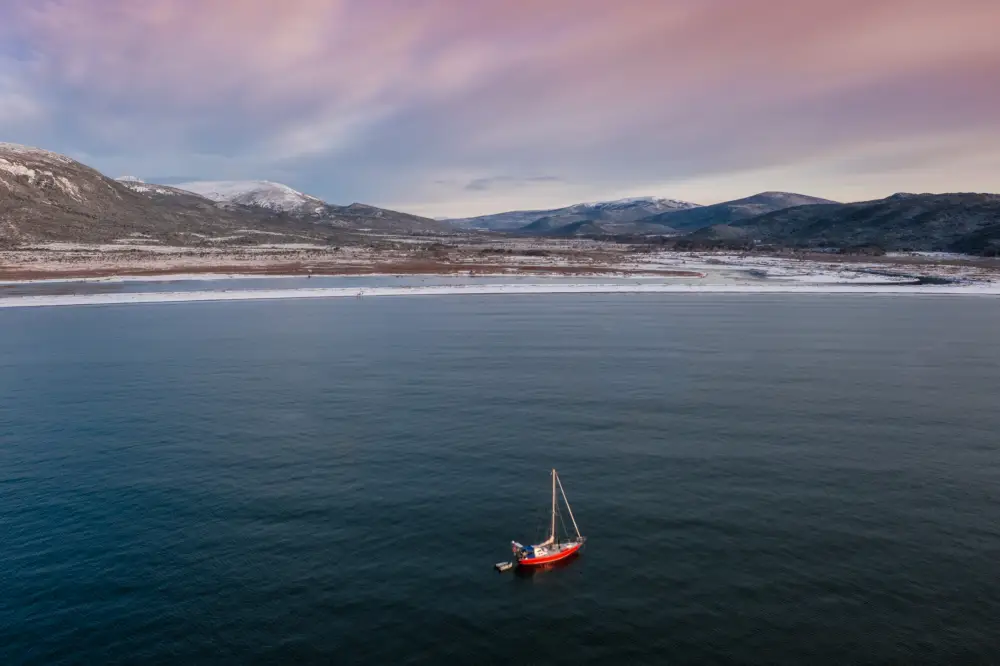
Isla de los Estados
Isla de los Estados is a provincial reserve with numerous anchorages where we can observe the rigor of the South Atlantic. The vegetation is very dense and closed, with highly varied topography.
The island holds significant historical value as it served as a refuge for sailors during the past century. At the eastern tip of the island stands the San Juan de Salvamento lighthouse, known as the Lighthouse at the End of the World.
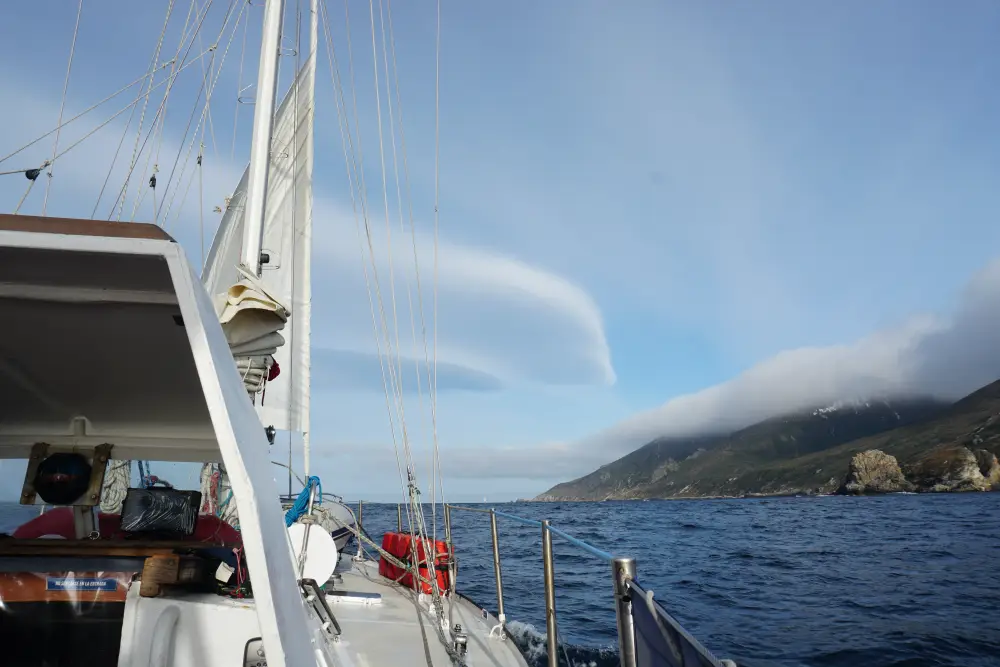
Scientific Expeditions
The ability to access inhospitable areas from a sailboat is significant from a scientific perspective.
Pic La Lune has participated in research expeditions with marine biologists studying cetaceans, terrestrial biologists and ornithologists, oceanographers, geologists, and geomorphologists, as well as in microplastic collection and other science-related activities.
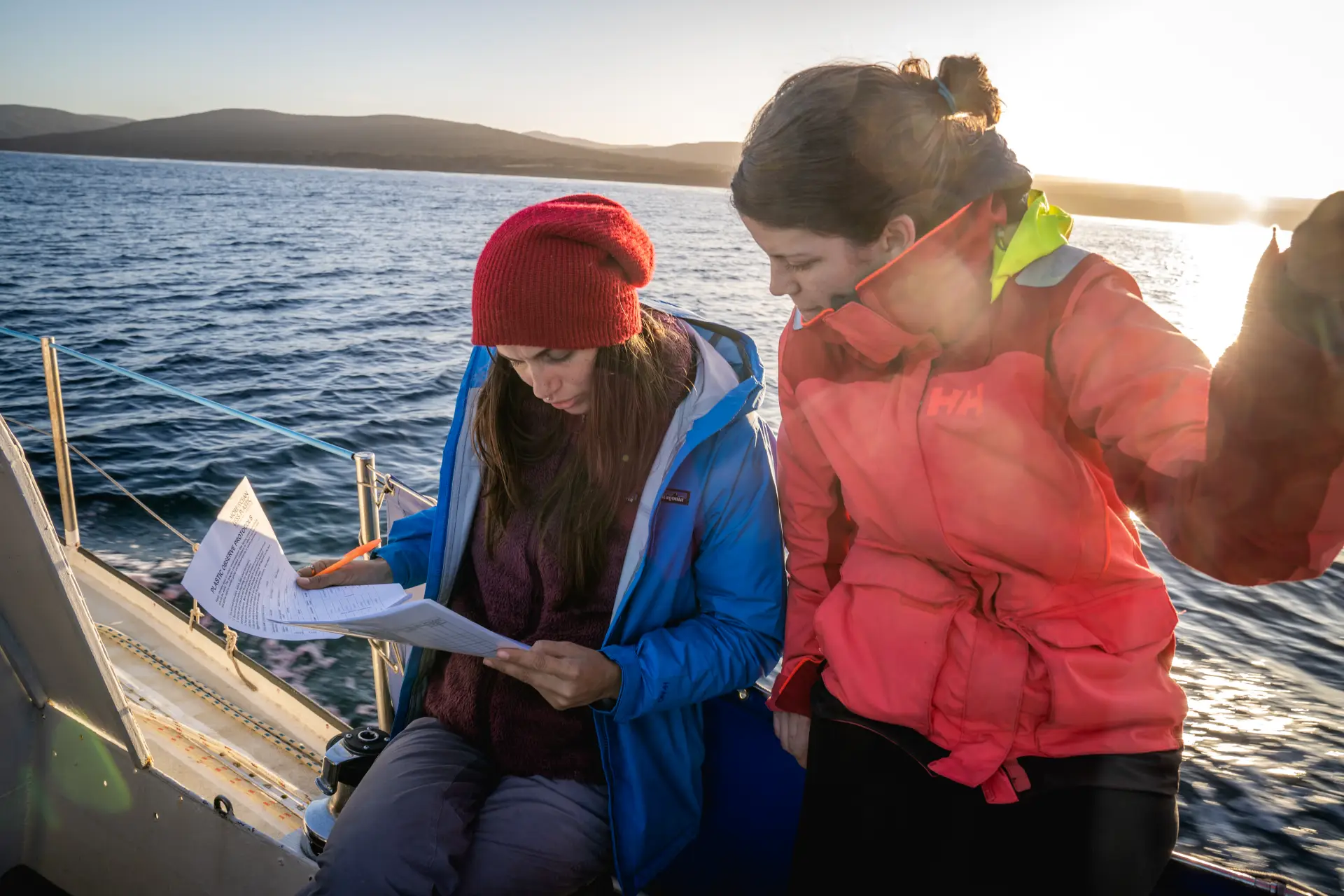
Skiing and Sailing
Combining skiing and sailing is a dream for many. Getting to know the region in detail makes this dream a reality, thereby making the most of expedition days.
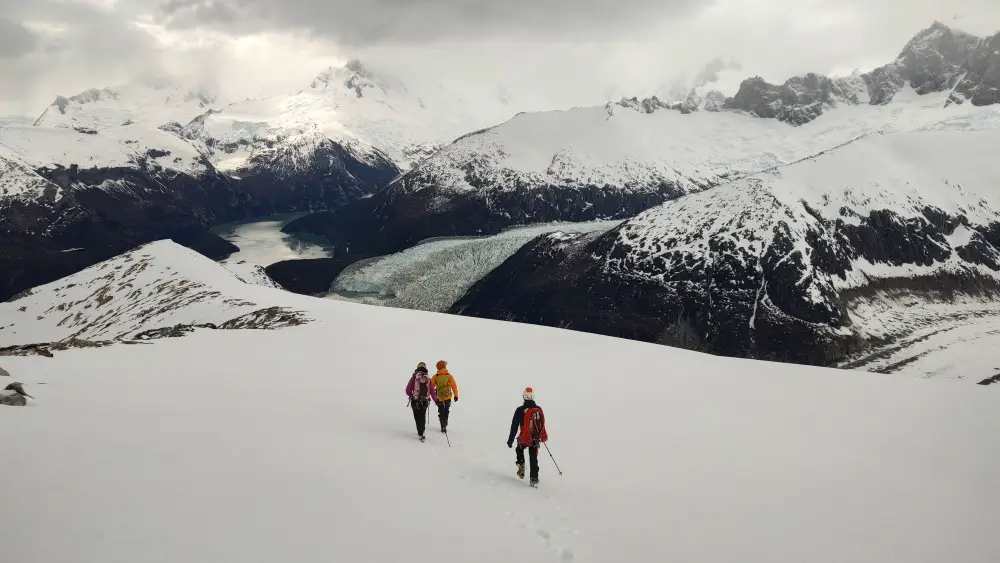
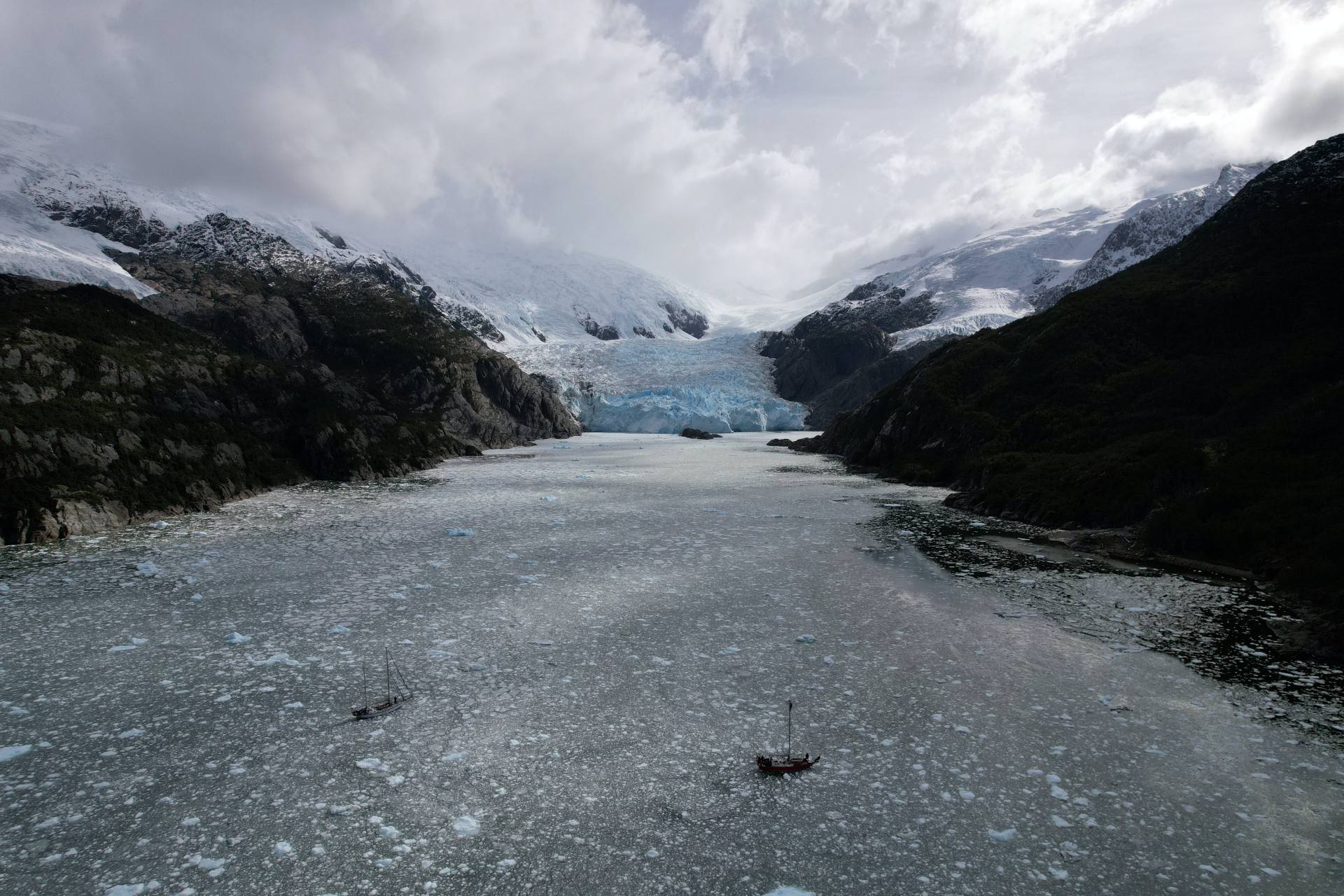
Fuegian Channels
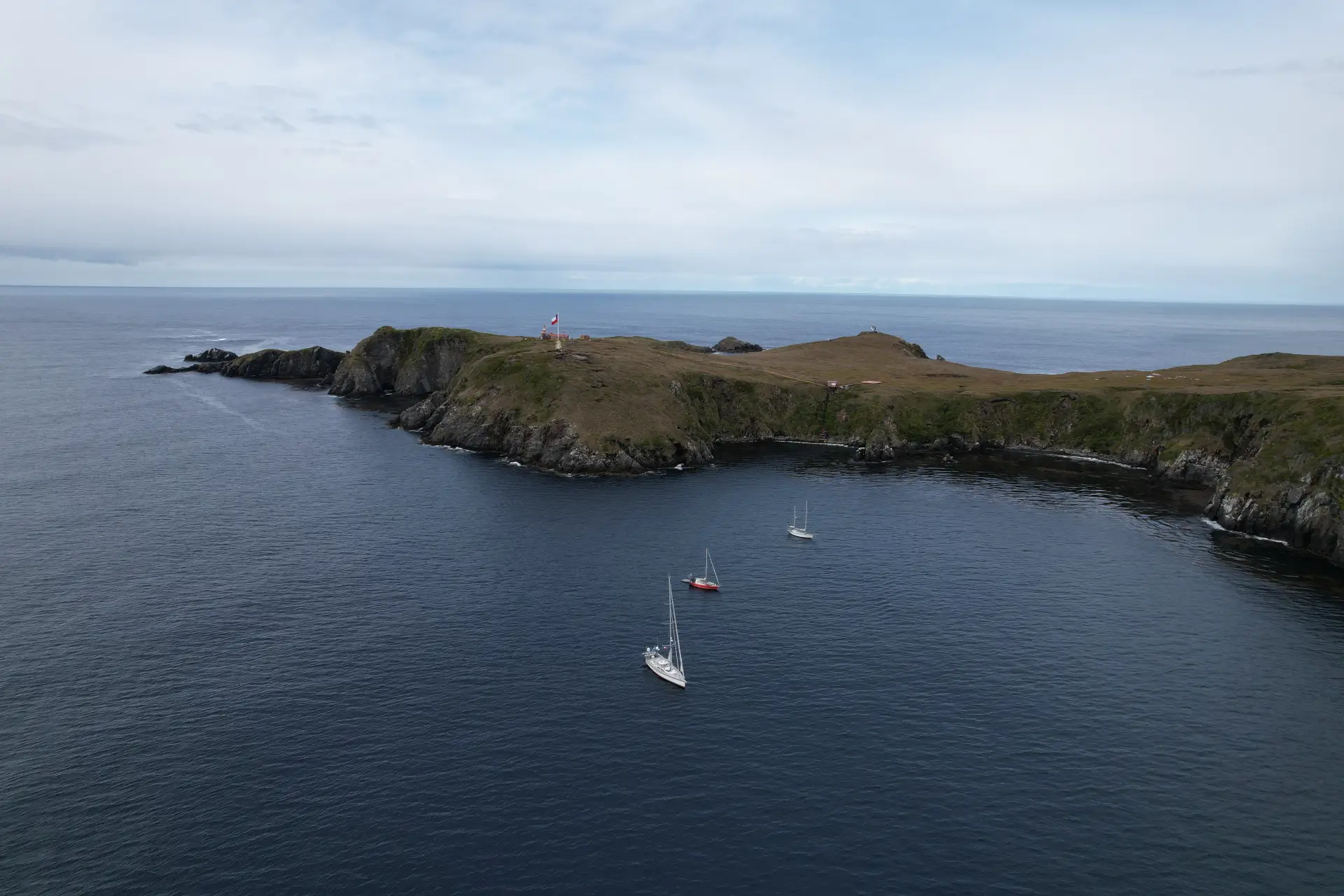
Cape Horn
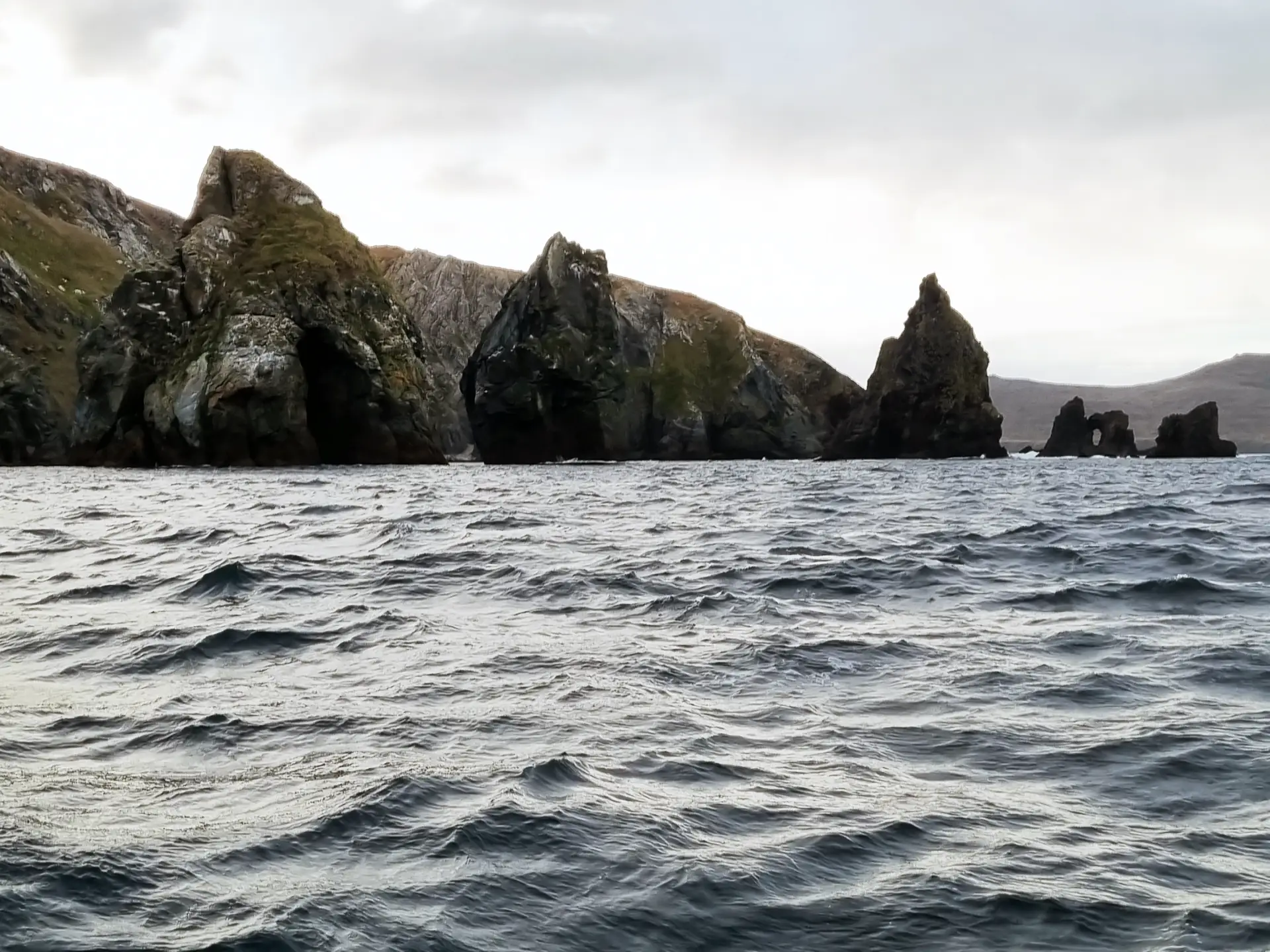
Cape Horn
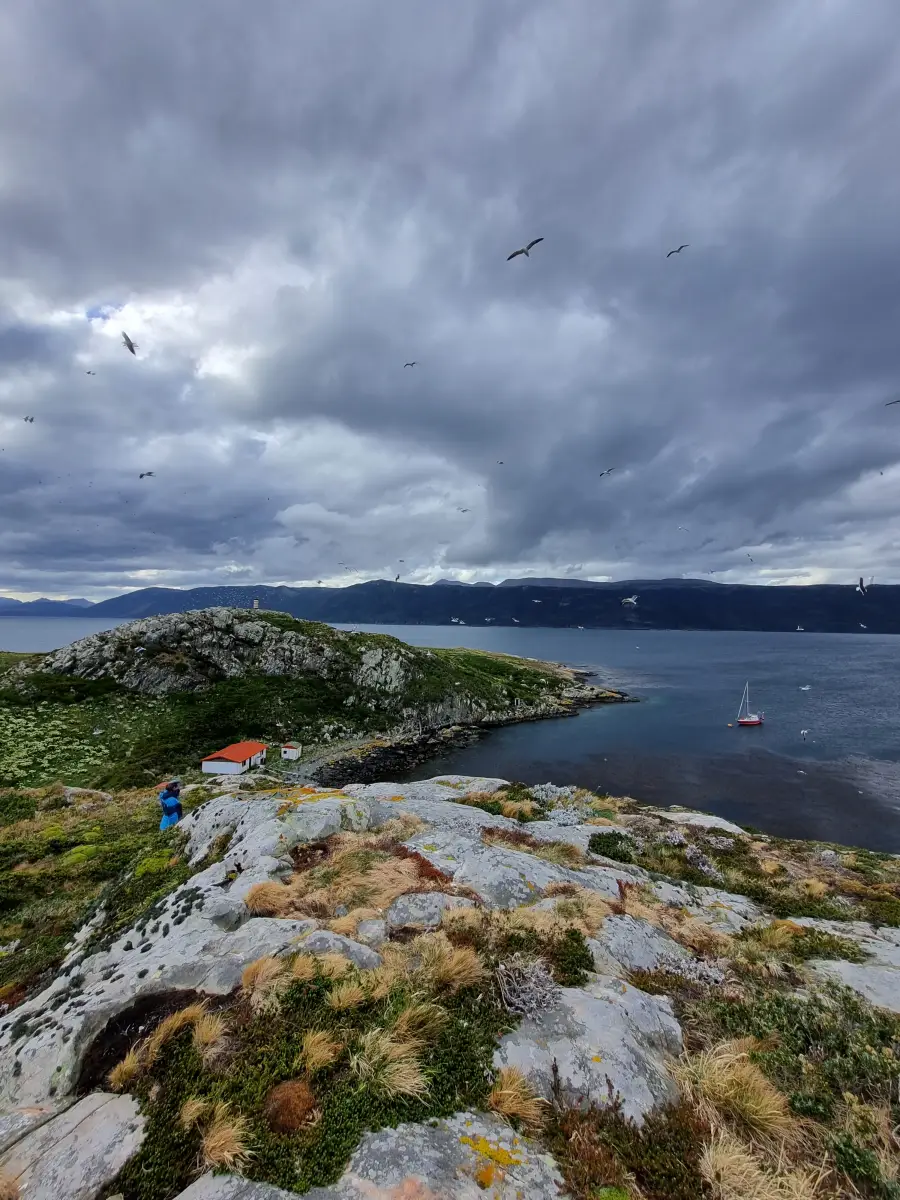
Scientific expeditions
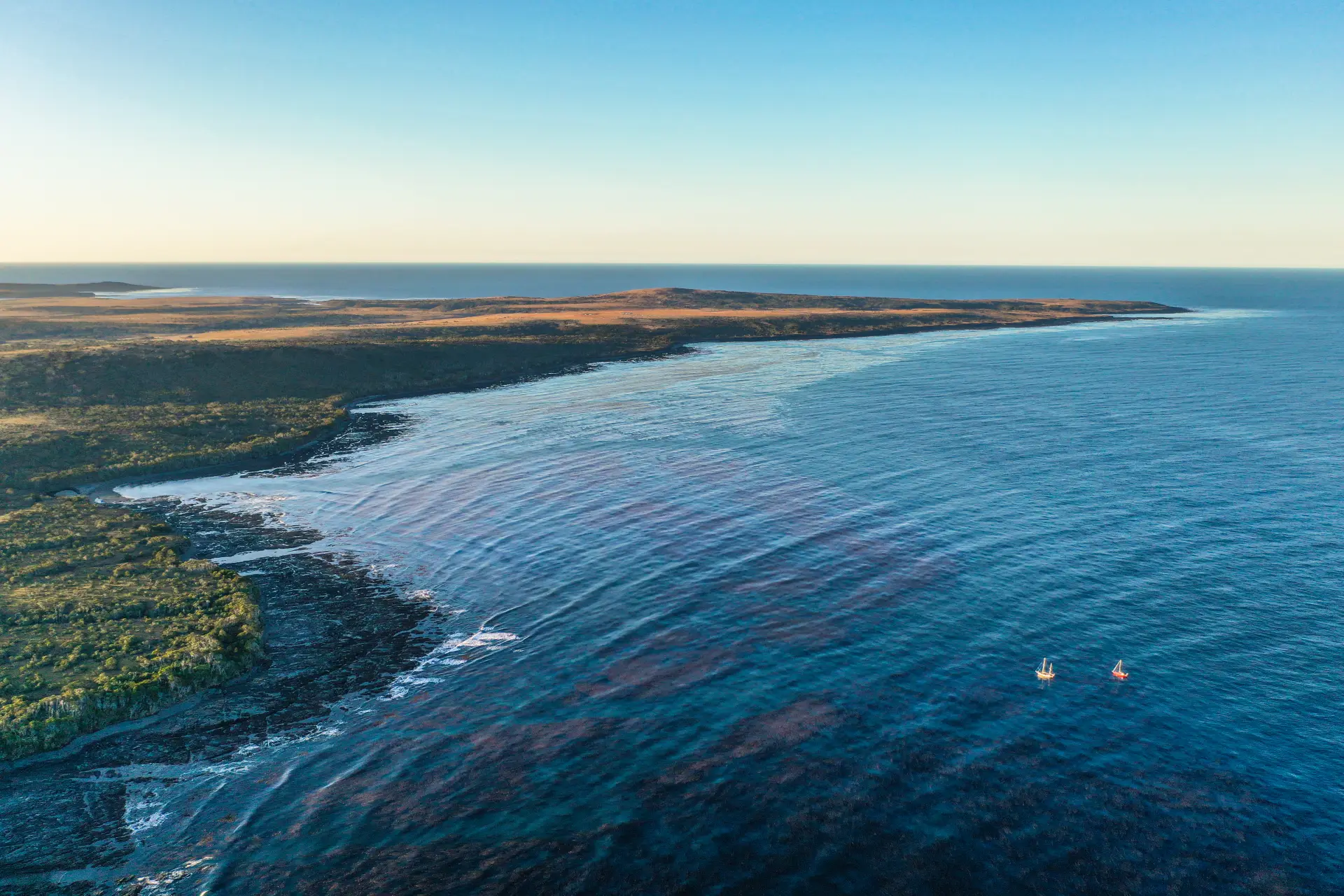
Mitre Peninsula

Mitre Peninsula
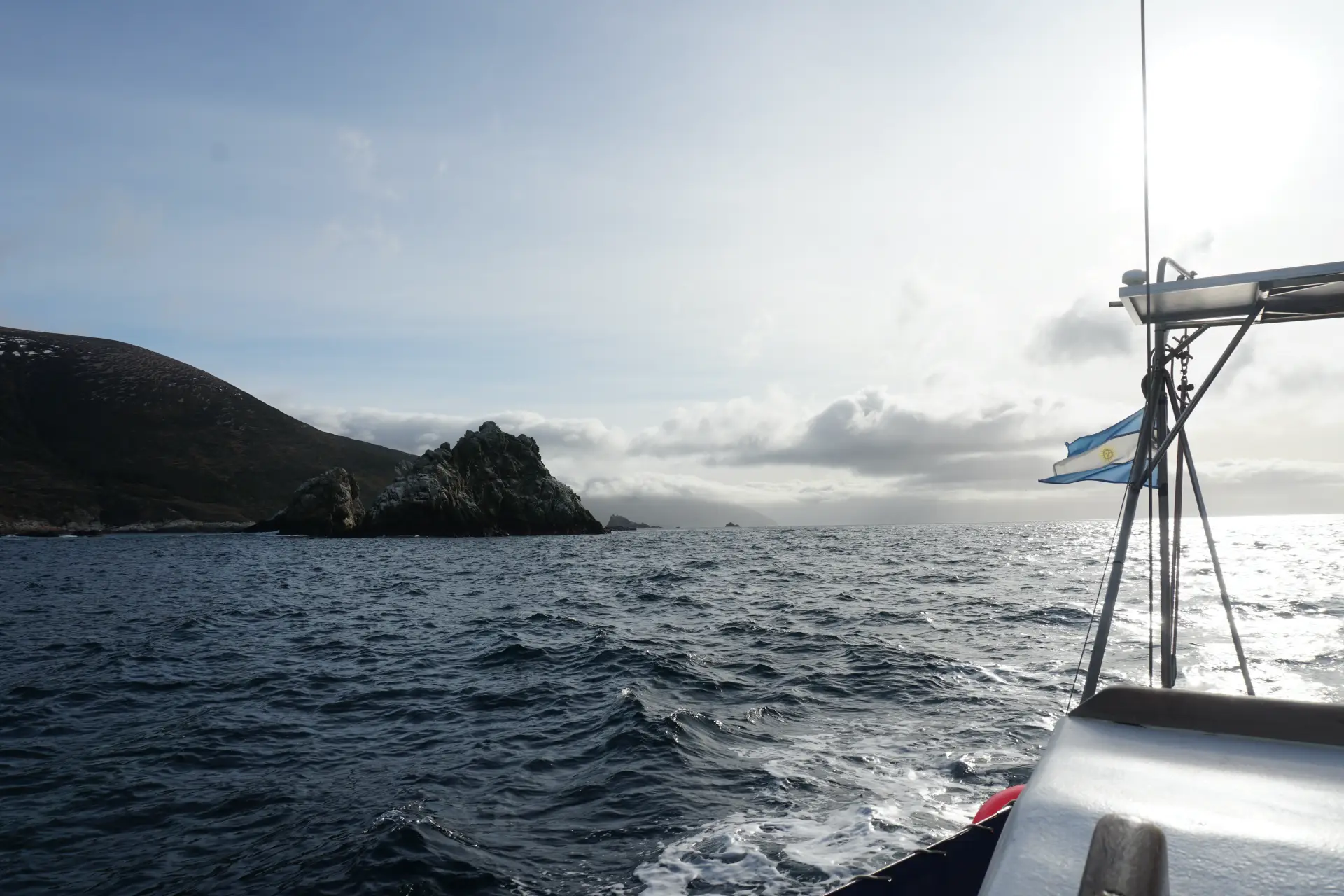
Isla de los Estados
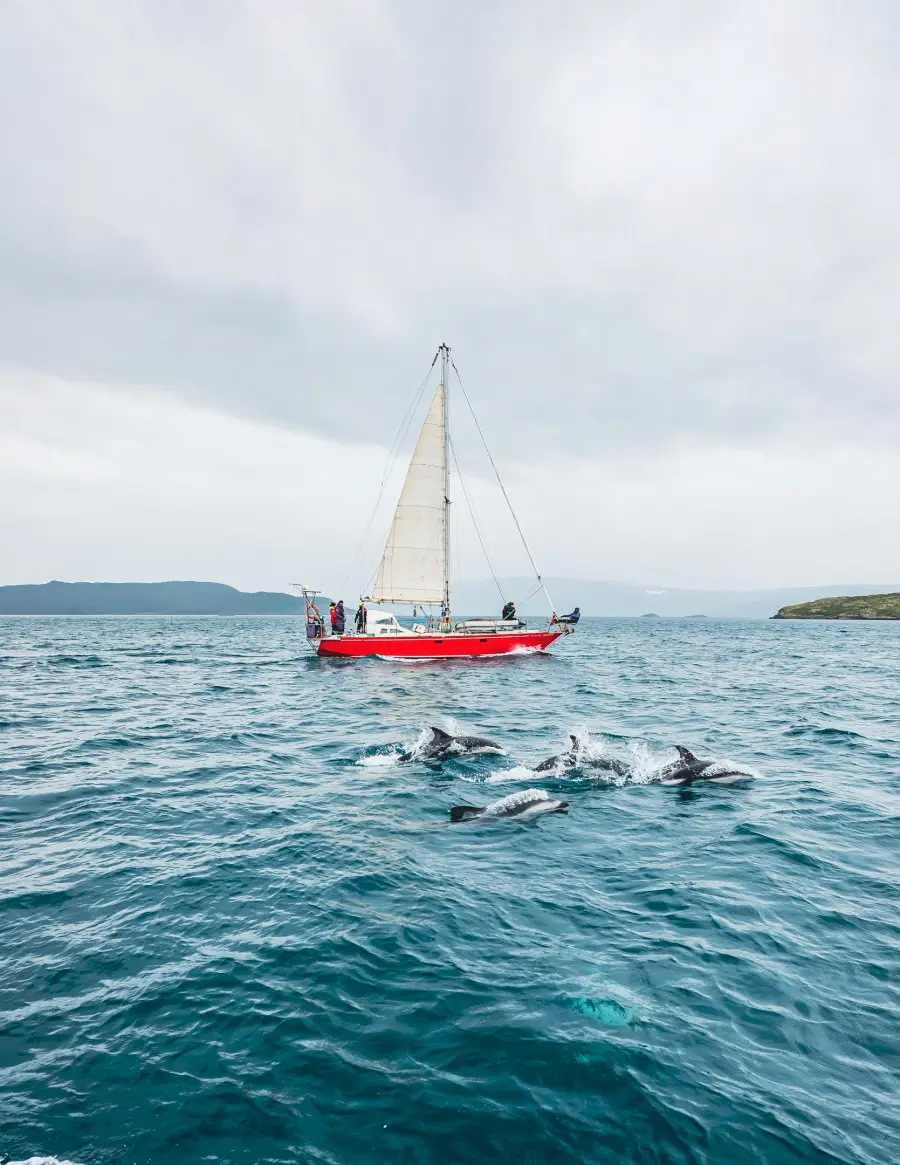
Scientific Expeditions
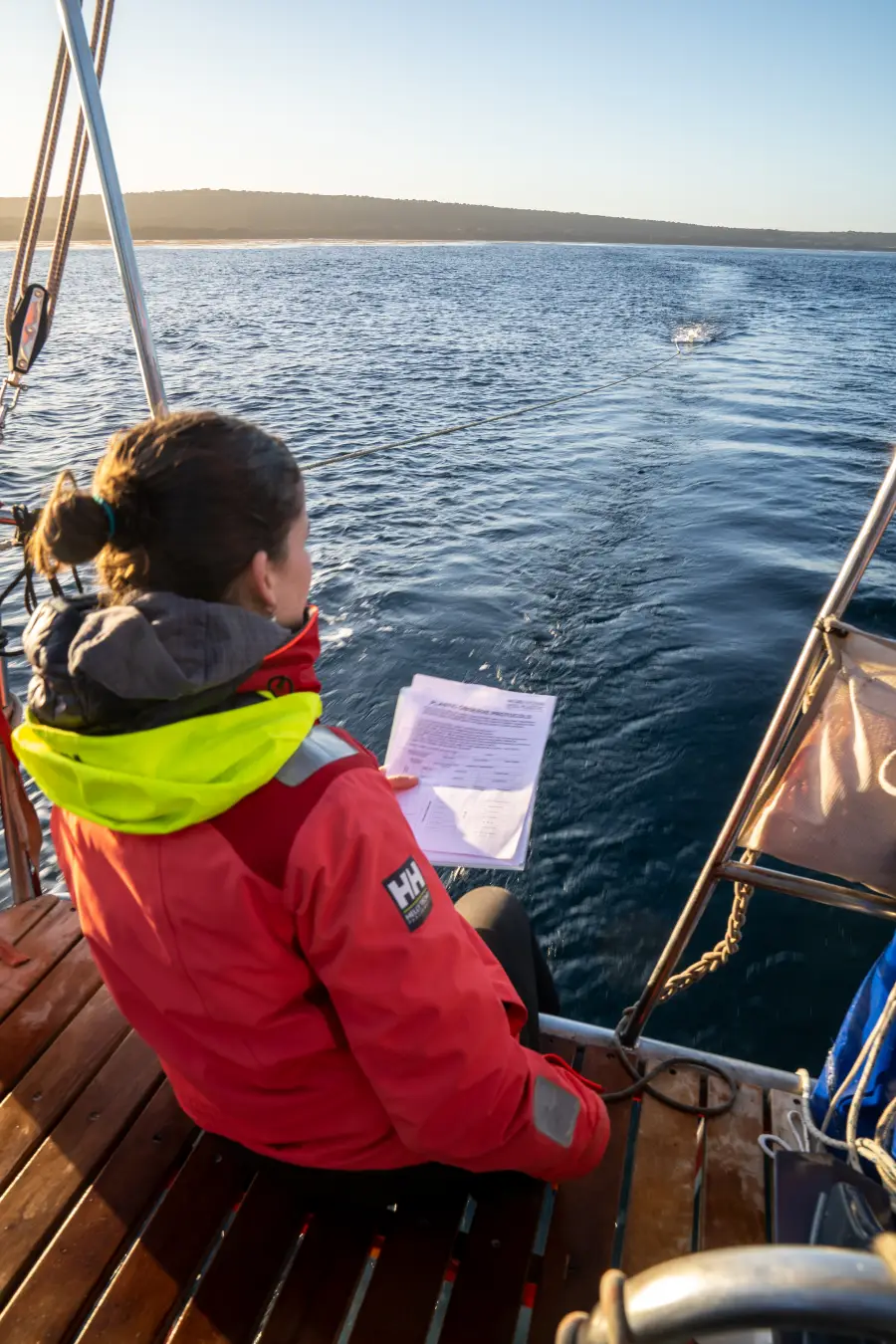
Scientific Expeditions
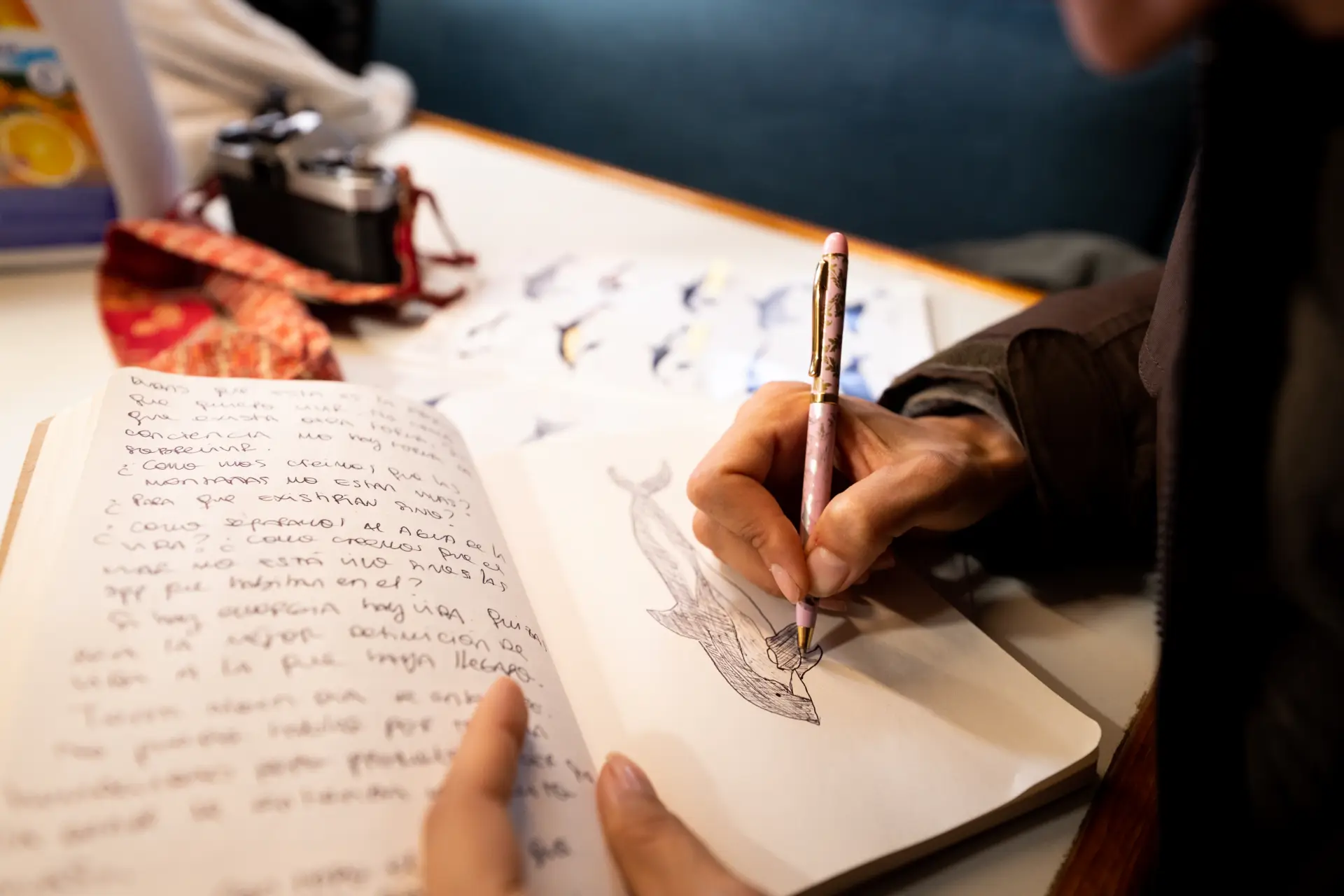
Scientific Expeditions
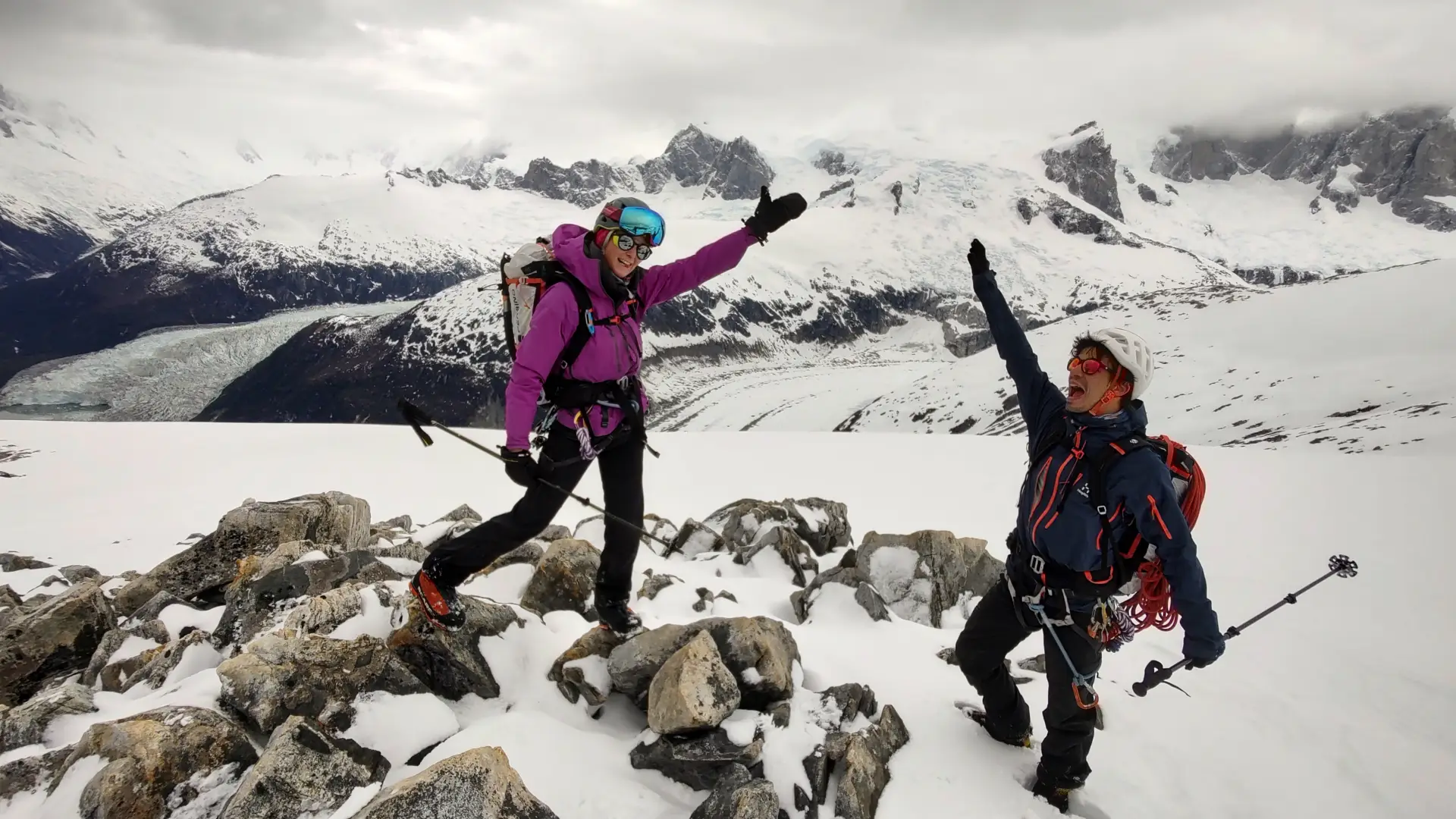
Skiing and Sailing
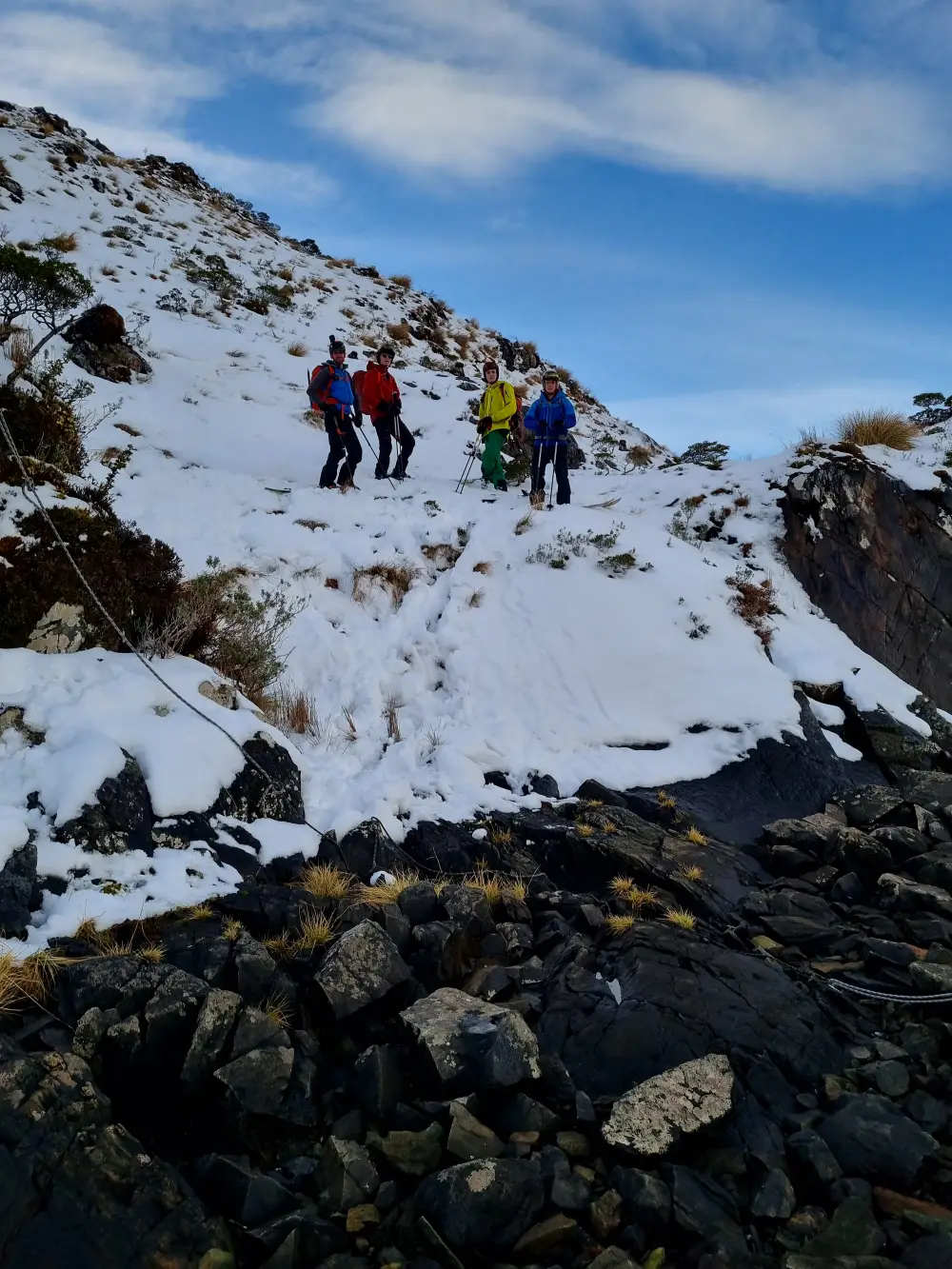
Skiing and Sailing
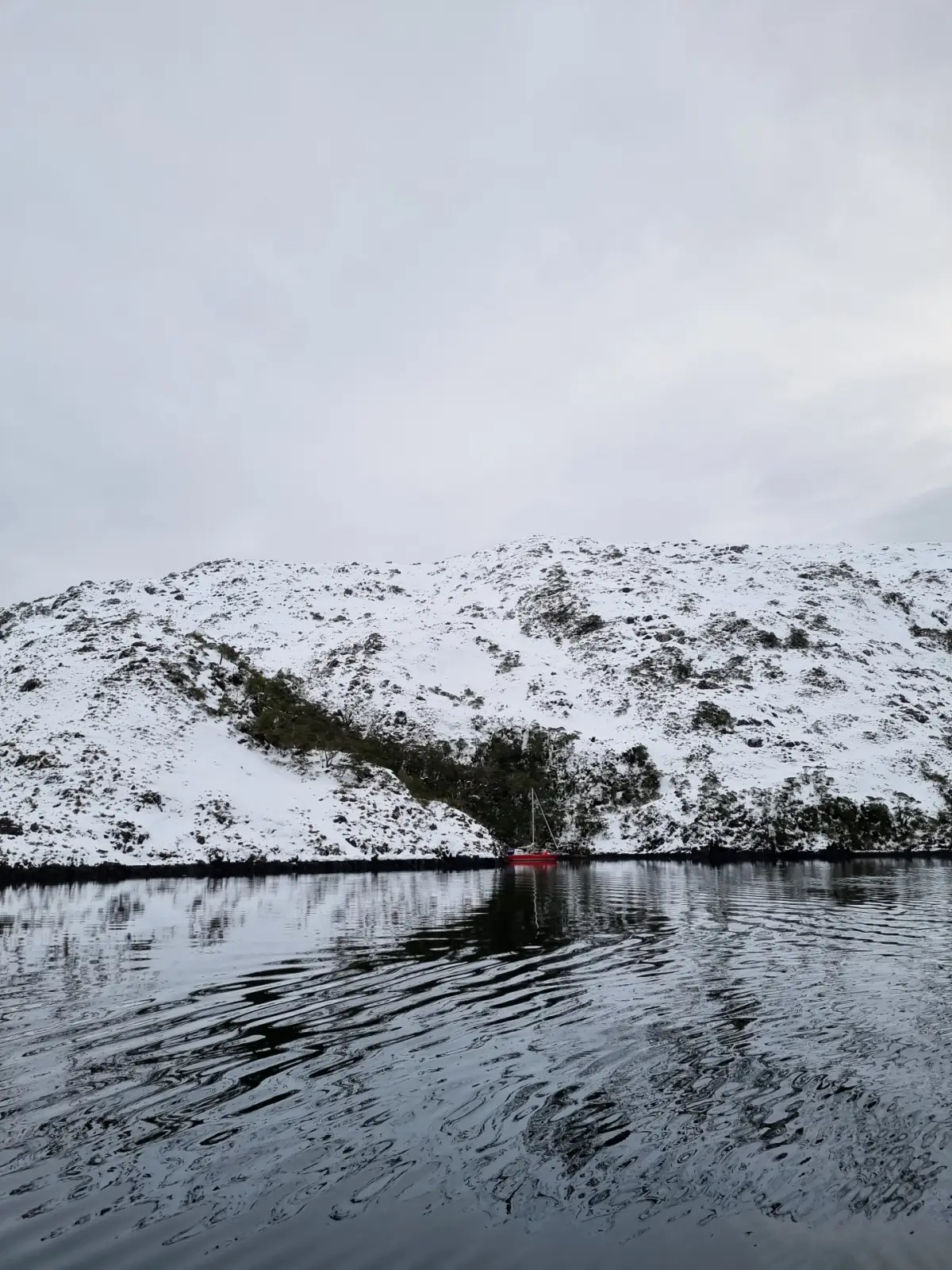
Skiing and Sailing
Sailing school
Learn to sail on the Pic La Lune
Sailing Clinic
100 Miles of the Beagle Channel
Sailing in the Beagle Channel or Onashaga Channel (Yagán language) combines the harshness of meteorological conditions with a journey through inhospitable and little-explored landscapes. The icy waters of the Beagle Channel are a destination for sailors worldwide, whether due to their proximity to Cape Horn or as a supply port for those heading to Antarctica.
The Beagle Channel was discovered in 1830 during a hydrographic expedition of the British ship HMS Beagle, commanded by Robert Fitz Roy, with Charles Darwin among the crew.
In the sailing clinic, we will emphasize and raise awareness about environmental care and its particular characteristics. We will conduct observations of flora and fauna (sea lions, birds (penguins), and whales (if we are lucky)). It is a place with a rich history of great sailors and explorers who discovered new seas. Additionally, it holds significant historical relevance for the indigenous peoples.
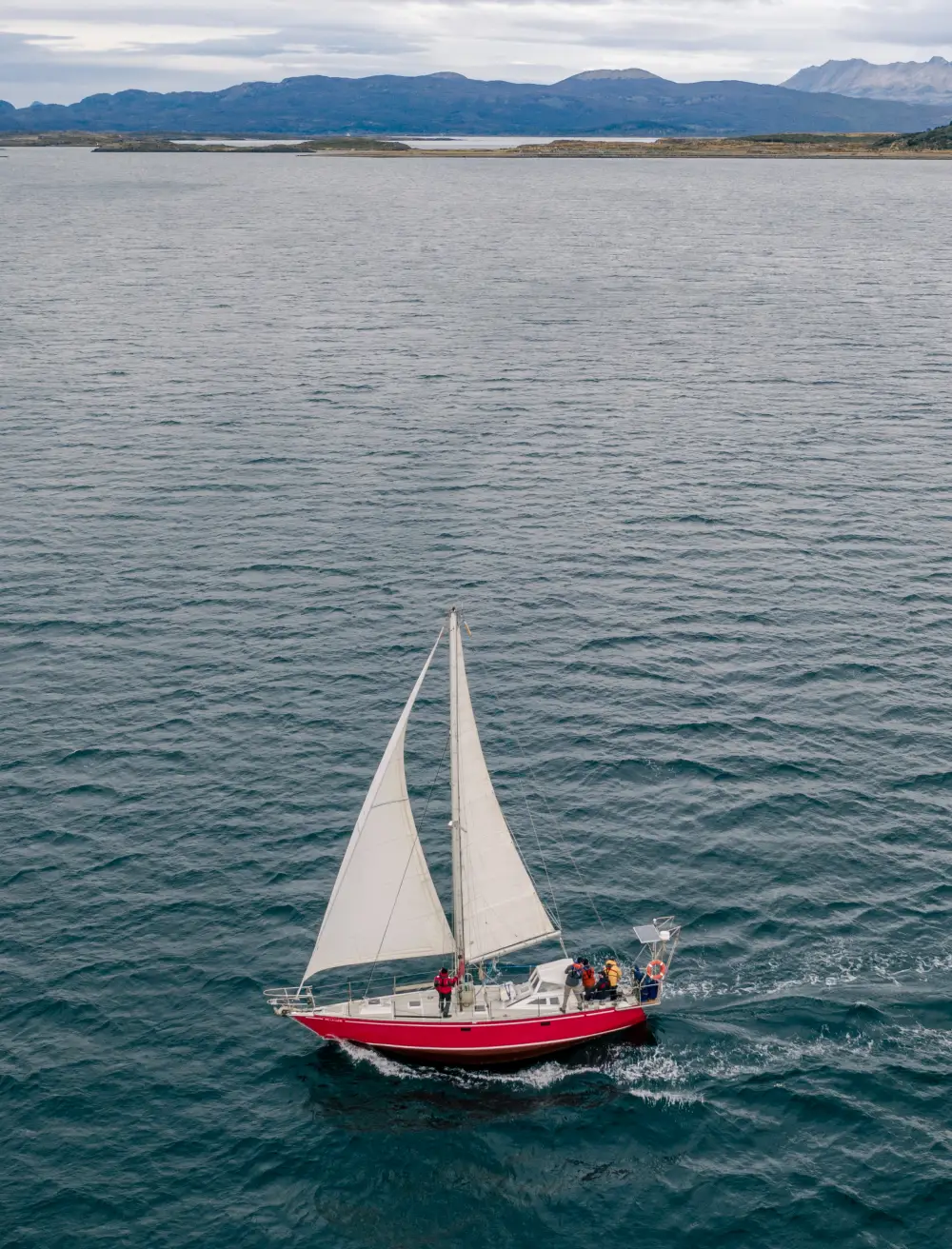
Level 1: Skipper Course
The student will develop the skills needed to navigate a vessel on voyages safely and responsibly.
The following specific objectives will be addressed:
- Deepen knowledge on dead reckoning navigation and the use of nautical and digital charts.
- Acquire knowledge in mechanics, electricity, electronics, and general repairs of the vessel.
- Gain tools for navigating in adverse hydrometeorological conditions.
- Develop skills for maneuvering in confined spaces (anchoring, docking maneuvers, and special spaces).
- Develop knowledge on safety equipment and basic first aid principles.
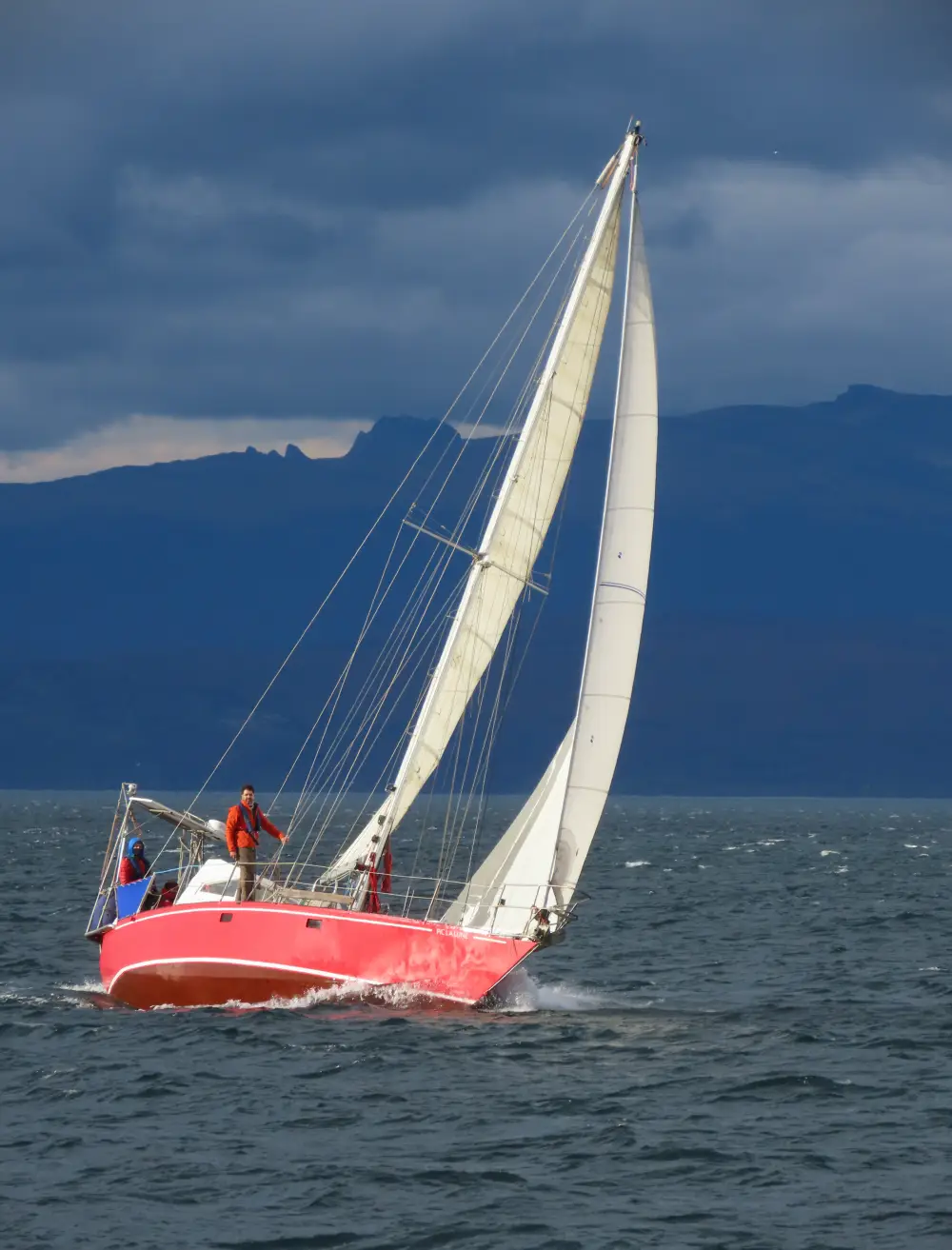
Level 2: Helmsman Course
Program for the Helmsman Course for Sailing and Motor Yachts.
The trainee will become a navigator with the tools needed to enjoy nautical activities in a conscious and safe manner.
The following specific objectives will be addressed:
- Acquire knowledge about navigation, including understanding nautical charts and their use, navigation challenges, and navigation in special zones.
- Gain skills in maneuvering and preparing the vessel.
- Understand the physical environment conditions of the Beagle Channel (interpreting weather forecasts, local currents within the channel, and the physical environment).
- Obtain basic knowledge of onboard repairs, mechanics, and troubleshooting.

Work Team
The crew behind the Pic
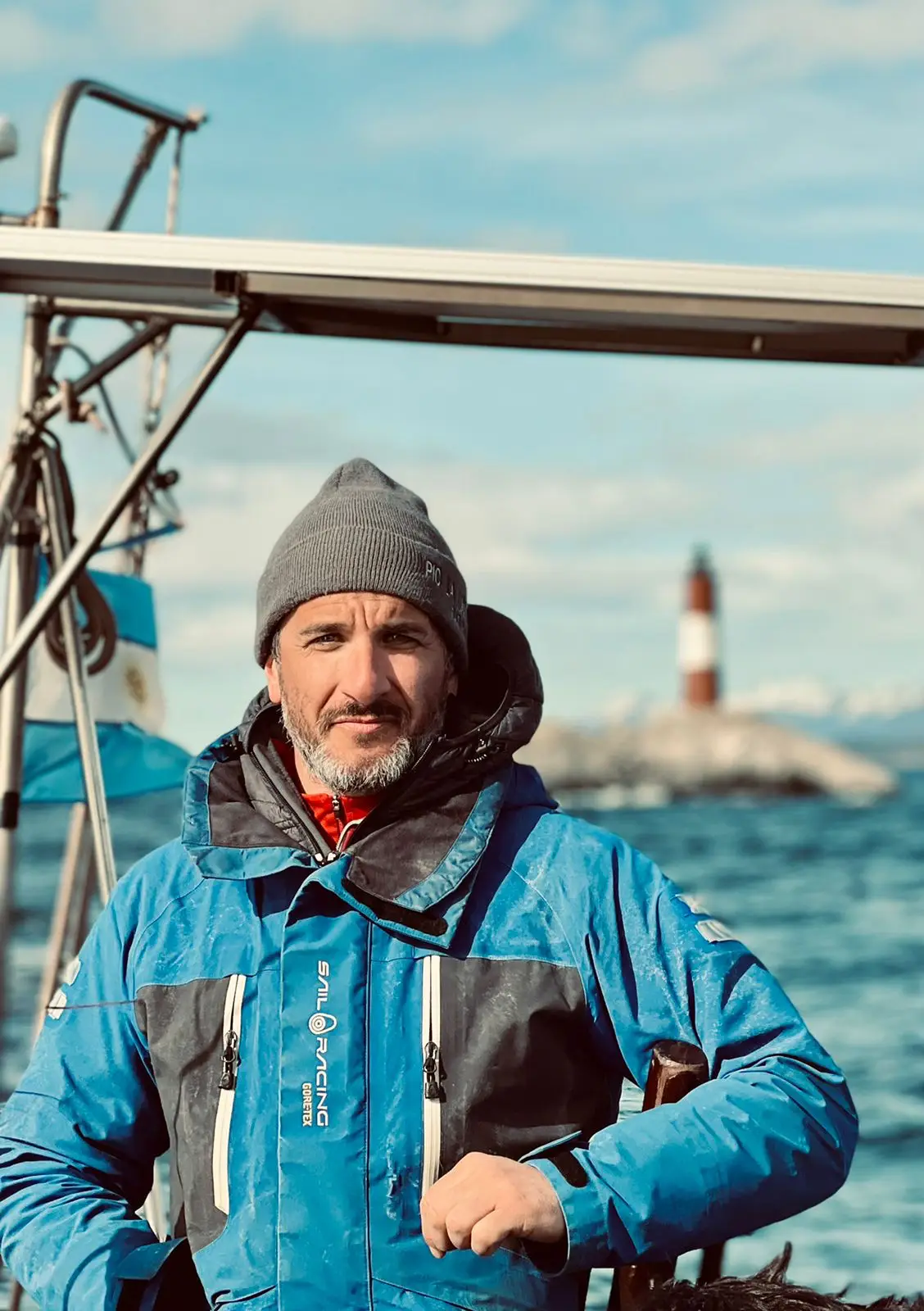
Diego Quiroga
Founder – Captain
Doctor in Geography, sailor, and musician. He began sailing at the age of 9 in an Optimist at the AFASYN club, practicing windsurfing, kayaking, and water skiing. He is a licensed yacht master for both sailing and motor sports, both recreational and professional (special REY), and has completed STCW courses.
In 2000, he attended his first sailing championship in Puerto Madryn, and in 2001 he competed in the Argentine Pampero Championship in Tucumán. In 2011, he moved to Ushuaia, where sailing became his hobby and way of life.
He started with short voyages and in 2014 completed his first ocean crossing on the sailboat Ocean Tramp from Punta del Este to Mar del Plata. He has sailed through the Fuegian Channels, the Atlantic Ocean, and around Cape Horn. In 2017, he completed his first extensive voyage as captain, from Puerto Montt to Ushuaia. In 2019 and 2020, he transported the sailboat Alma Mía from Buenos Aires to Puerto Deseado. In 2022, he participated in an Antarctic expedition with Selma Expeditions and in 2023 in the nonstop Ushuaia–Piriápolis crossing.
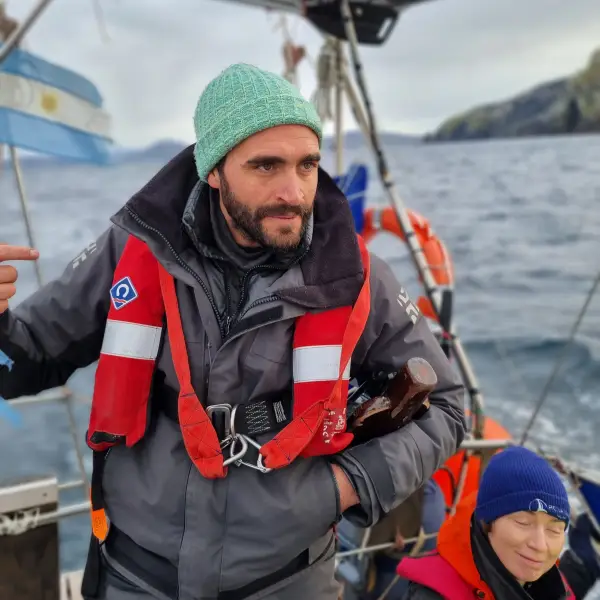
Gonzalo Granero
Captain – Kayak Guide
Gonzalo began kayaking in the river at the age of 6, a passion that quickly turned into a competitive pursuit. He has academic training as a Physical Education teacher and obtained certification as a lifeguard. Additionally, he holds a Yacht Master license for both sail and motor vessels and has completed STCW courses.
His first ocean crossing was in 2018 aboard the sailboat “Caimán”, traveling through Ushuaia, the Malvinas, and Uruguay. He has worked as a kayak guide on Antarctic expedition cruises and has completed several voyages aboard the Pic La Lune as first officer, exploring Cape Horn, the Fuegian Channels, and the Mitre Peninsula.
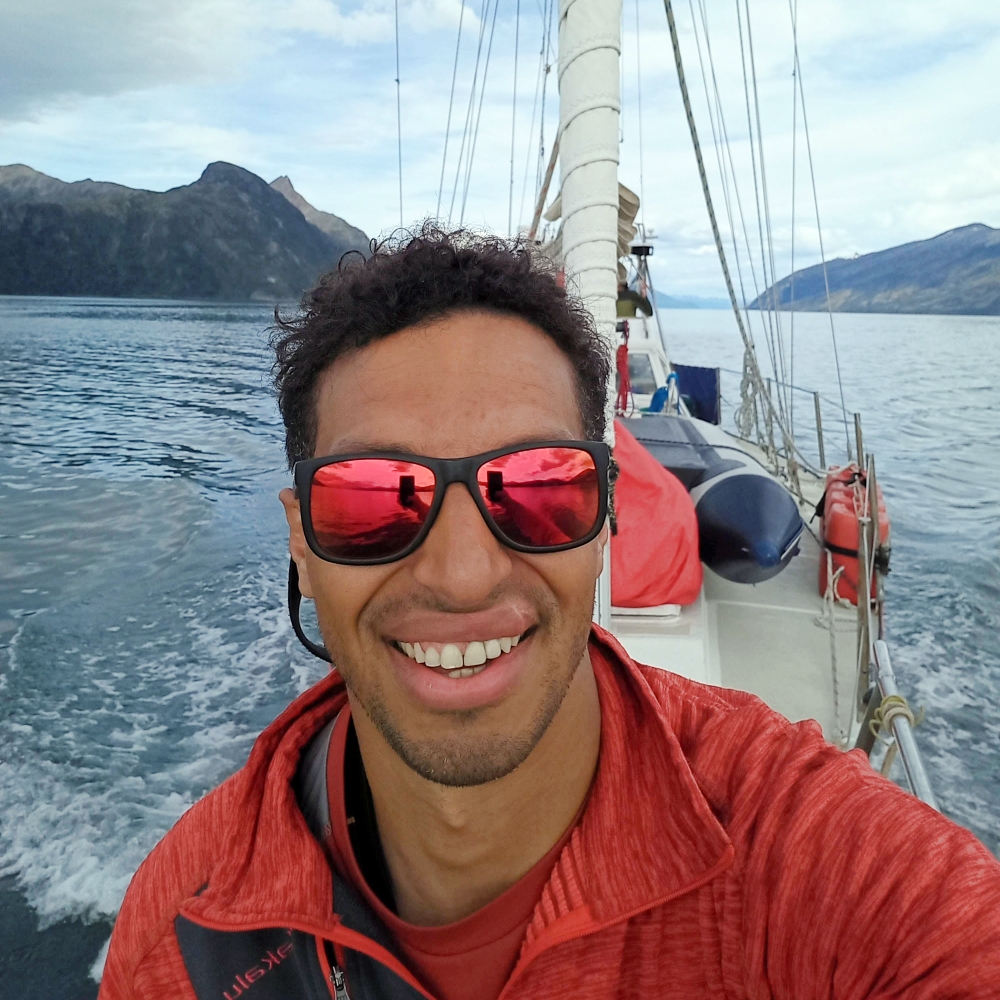
Carlos Rodrigo Casabella
Captain
Carlos is a Physical Education teacher (Regional UNLP) and a student in the Geography teaching program. His experience spans both water and mountains. He is a kayaker and practices skiing, snowboarding, cross-country skiing, MTB, and trail running, among other sports. Carlos is passionate about the Fuegian archipelago and its history. He is licensed as a Yachtmaster for Sail and Motor (First Class of Skippers from the Pic La Lune Sailing School) and has completed STCW courses. His experience includes multiple expeditions on the Pic La Lune and Ksar to Península Mitre, Cape Horn, and the Fuegian Channels. He currently works as an Alpine Ski Instructor at Club Andino Ushuaia.
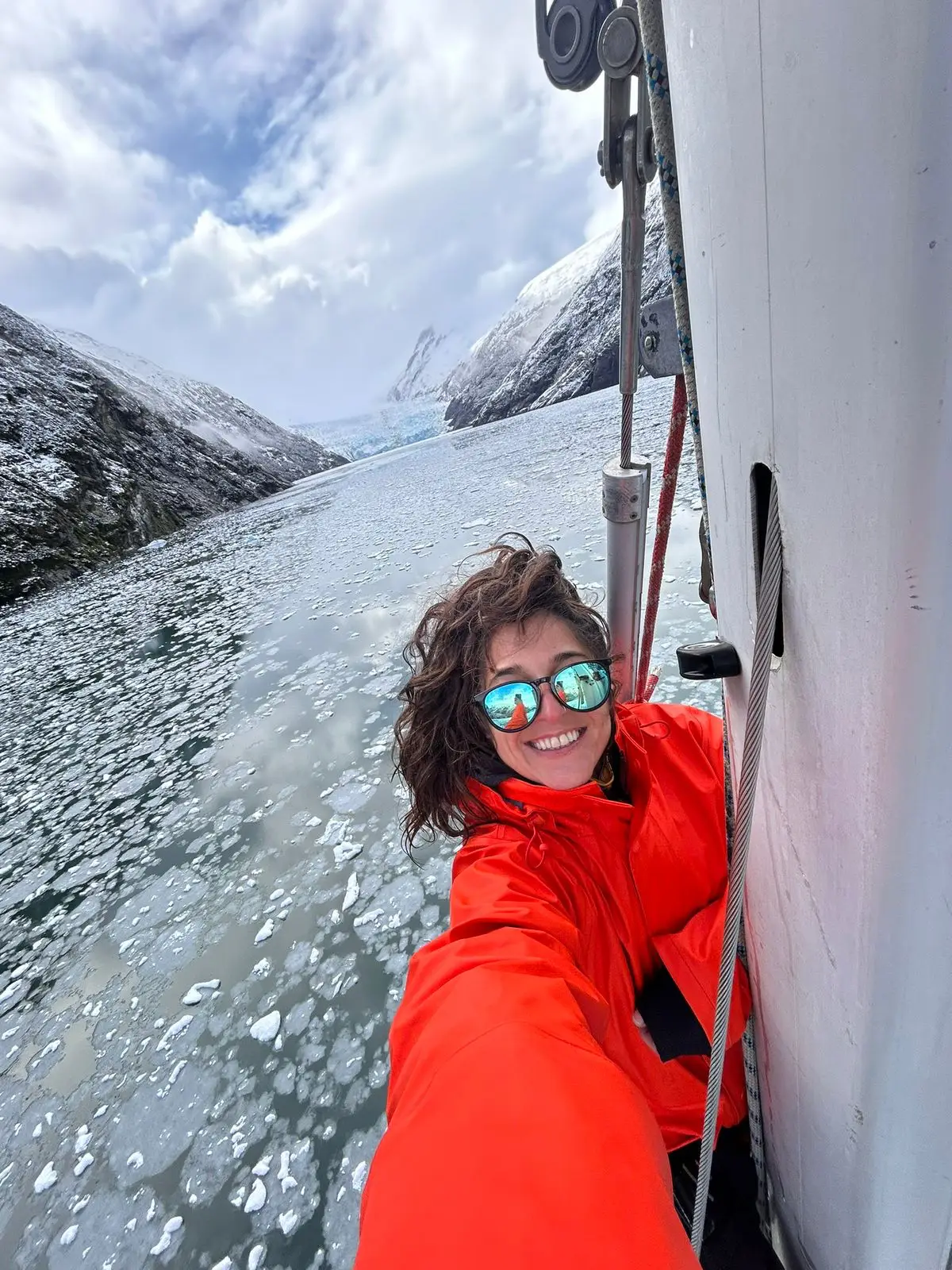
Candela Rodriguez
Crew member – Kayak guide
Candela is passionate about kayaking and diving, with solid training and experience in various aquatic disciplines. Among her achievements, she stands out for obtaining the ACA Level 3 in kayaking and her participation in the Double Expedition on the Pic la Lune in the fjords, scheduled for March and April 2024. Additionally, in April 2024, she will guide a trip with Nativo Kayak.
In 2023, Candela is undergoing training with the Naval Prefecture in several areas, including STCW, Nautical Driver, Crowd Control and Management, Risk Management, and as a Rafting/Boating Guide. She is also completing her Kayak N1 certification at the Club Náutico Afasyn.
In the field of diving, Candela holds Open Water and Advanced certifications, allowing her to dive up to 30 meters. She obtained these certifications in Thailand in 2019.
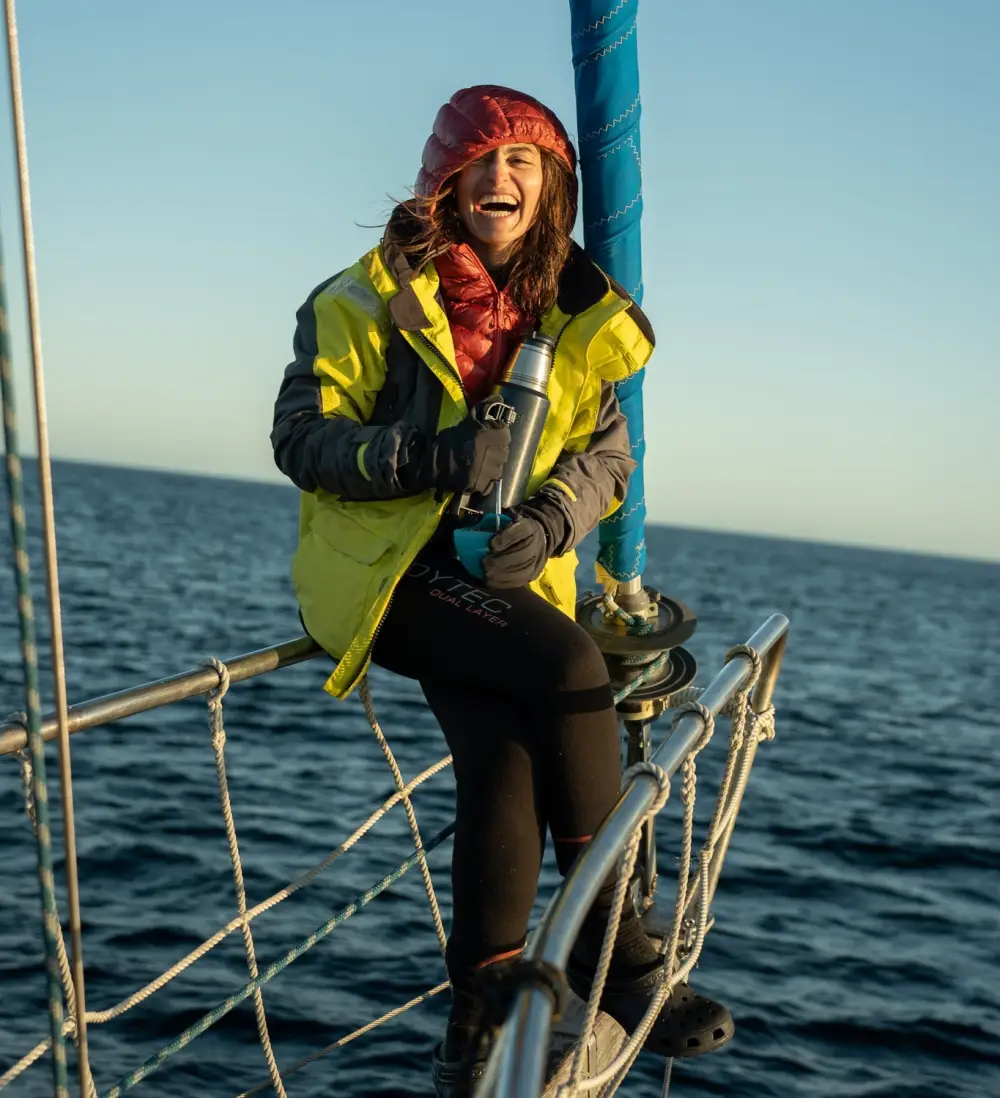
María Babahekian
Crew Member – Logistics – Diving and Snorkeling Guide
María Laura is a freediving instructor (AIDA) and a scuba diving guide (PADI). She also trained as an underwater visual artist at the National University of Fine Arts and is involved in artistic and conservation projects through the Oceanar organization.
From 2009 to 2022, she traveled through Oceania, Asia, Africa, and Latin America, actively participating in various expeditions. In 2019, she was part of the Arctic expedition with Northern Explorers. She also visited Antarctica aboard the Ocean Tramp in 2018 and on an expedition cruise in 2024. She explored the Mitre Peninsula on the Ksar in 2022 and the Fuegian Channels on the Pic La Lune in 2024.
Currently, she works as a travel assistant for life on board and in logistics at different locations around the world.
